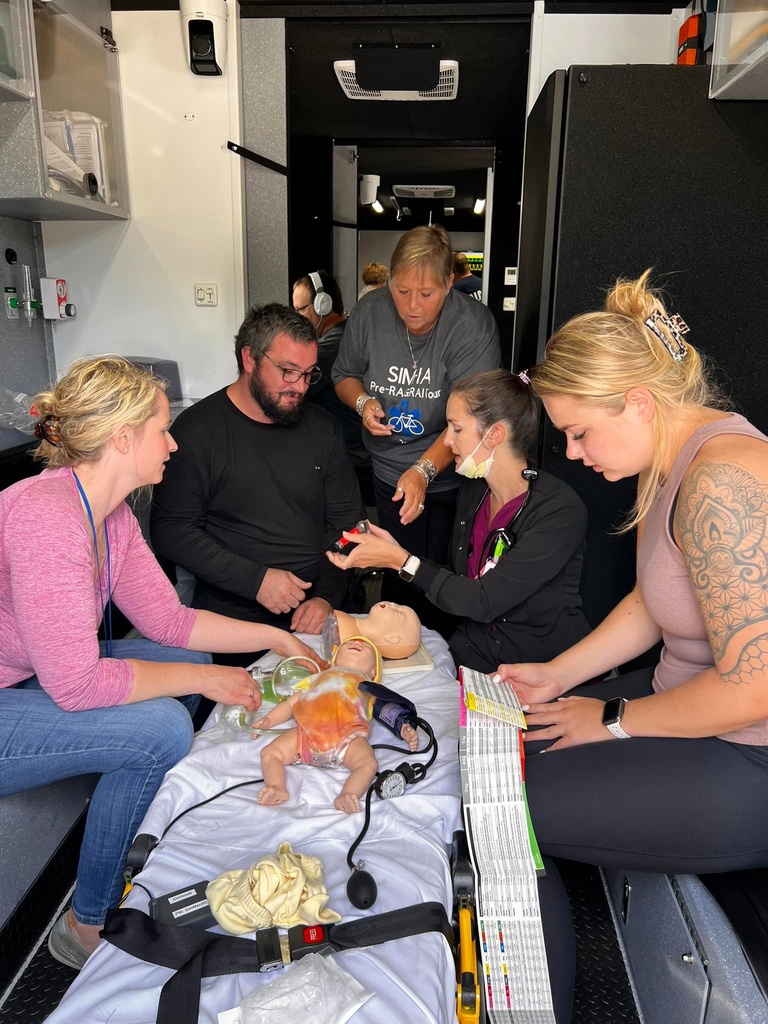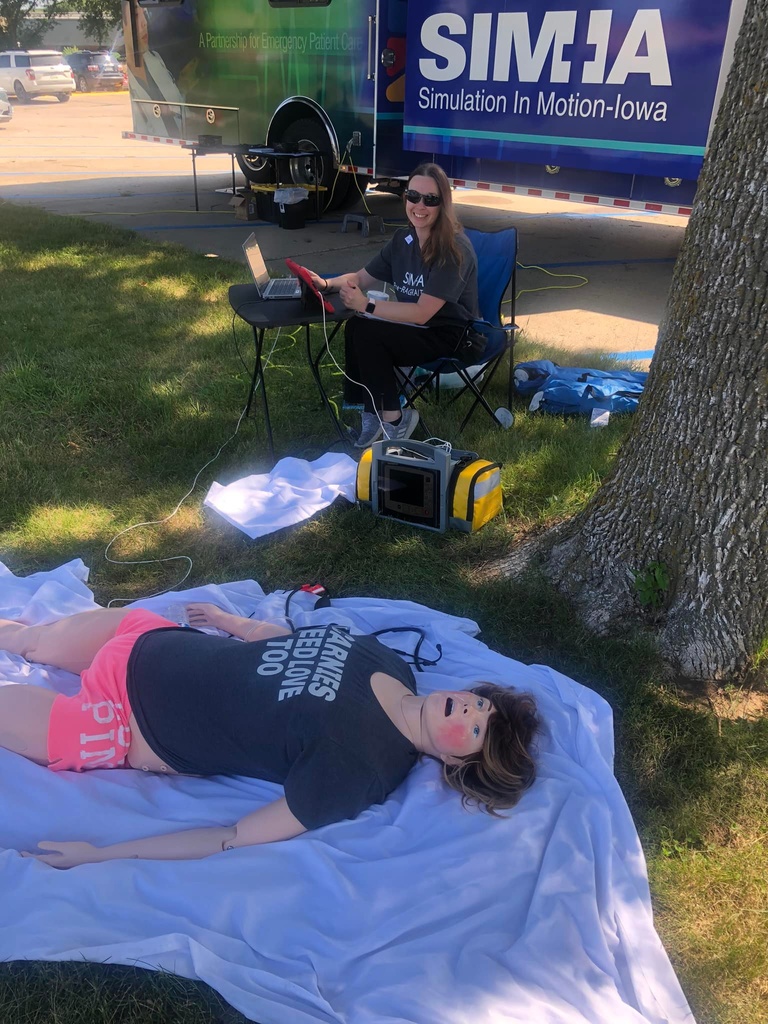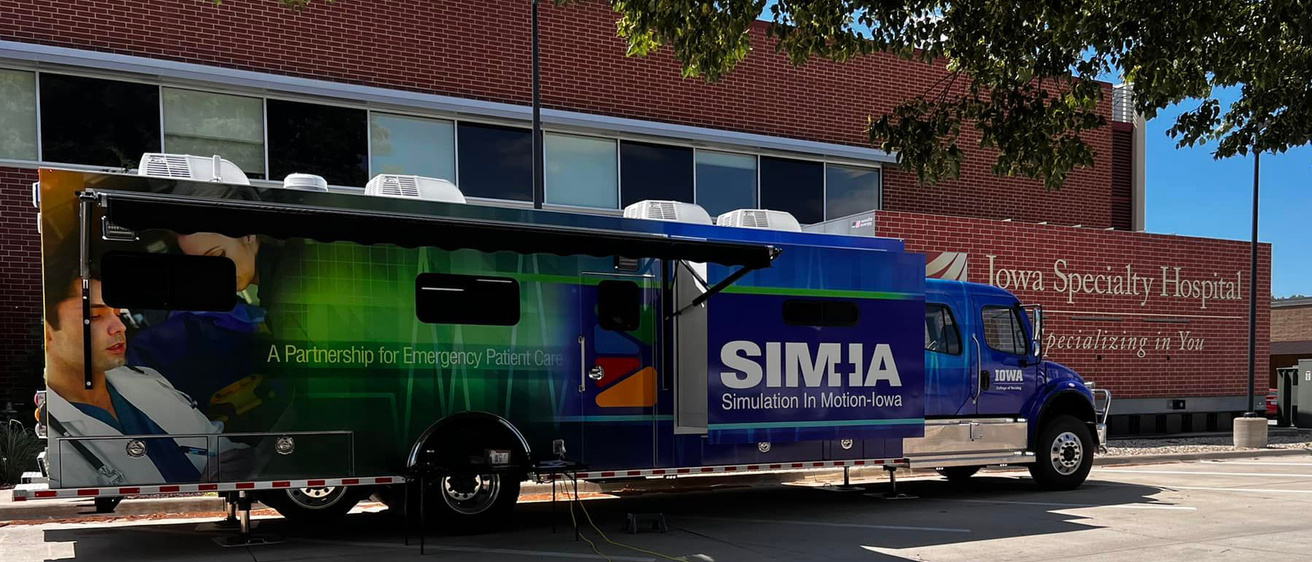
With detailed plans for camping, food, entertainment, and merch, towns along the Register’s Annual Great Bicycle Ride Across Iowa (RAGBRAI) route are ready to meet the needs of the 10,000 bicyclists who will visit while biking across the state. Thanks to the Simulation in Motion – Iowa (SIM-IA) program, their emergency responders are prepared as well. Covering over 320 miles and stopping in eight towns along this year’s route, the SIM-IA pre-RAGBRAI tour gives local emergency health care providers a chance to practice their skills with simulated clinical scenarios they might encounter during the ride.
Since the first simulation truck arrived in late June, the SIM-IA educators have been eager to begin delivering high-quality, evidence-based education across the state, and RAGBRAI presented a great opportunity. The team talked with providers about the calls they typically get during the ride and then chose relevant educational simulations to run, said SIM-IA Senior Advisor Dr. Jacinda Bunch. The simulations chosen include a woman who is dehydrated and overheated, a man with trauma from a bike-tree collision, an infant with a head injury from falling out of their improperly secured bike carrier, and a child suffering broken bones and other trauma after chasing his ball into traffic. “We really wanted to showcase the simulators and give providers an idea of what we can do,” said Bunch.
Matt Hubbard, a western Iowa paramedic who attended the first training session in Sioux City told Iowa Public Radio’s Kendall Crawford he was excited for the chance to interact with high-quality technology. With pupils that dilate and pulses that react to treatment it gives a lifelike practice session, Hubbard told IPR. “[It’s] very realistic. It brings our training up to a whole new level,” he said.
The simulators are so realistic that providers often forget they are in a simulation exercise. Bunch recalled one participant who, while maintaining the cervical spine with one hand, was holding and rubbing the infant patient simulator’s hand with the other. “He was using his free hand to comfort the baby and not even realizing it,” she said. “That’s how in to the scenario they get. They start treating the sim patients like real patients.”

Hubbard is not the only one excited to train with the SIM-IA equipment. “People have been very appreciative and have already talked to us about coming back,” said program coordinator Brian Rechkemmer. “[One] training officer was like a kid in a candy store and has already scheduled another training for 50 people!”
Depending on what providers need and what’s seen in their communities, the SIM-IA team will develop something specialized and individual for these follow-up trainings. The trainings can also be developed to practice responses to rare but complex scenarios, or to reflect on previous experiences and practice new responses. No matter what they are designed for, sometimes they lead to questions no one has realized they need to think about. – like on one tour stop Bunch recounted where, when faced with the infant trauma, participants realized they didn’t know whether to take the patient to the pediatric hospital or the trauma hospital. Finding the answer to questions like that in a simulation can save precious time during a real call.
With two sessions remaining, the tour has educated more than 80 people and has been a great success.
“We’ve really enjoyed it,” said Dr. Bunch. “All of the communities have been welcoming, and it has been nice to get out, go across the state, and serve these providers. They’re taking care of their communities, and this is a way we can help them do that.”
See news coverage of the tour here
